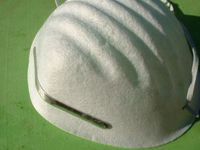Safety Tips to Follow When Working Around Concrete Dust

Does your job require you to work around concrete dust? The Occupational Safety and Health Administration (OSHA) states that approximately 250,000 people work in the concrete manufacturing industry in the United States. Unfortunately, concrete manufacturing has a relatively high rate of work-related injury, with over 10% of all workers sustaining an injury. Among the most serious injuries associated with concrete manufacturing is a respiratory disease known as silicosis.
What is Silicosis?
Silicosis is a potentially fatal lung disease in which a worker inhales crystalline silica into his or her lungs, at which point hard nodules form around the silica particles. If these nodules become too large, it can restrict breathing while causing other problems. Workers in the concrete manufacturing industry are particularly at risk for developing silicosis due to their constant exposure to the mineral dust.
Silicosis isn't a condition that develops overnight, however. It generally takes years of exposure before the symptoms manifest. The problem, however, is that once the symptoms manifest, it's usually too late to reverse. This is why it's critical that employers implement the necessary safeguards to protect their workers from this deadly lung disease.
Protecting Yourself from Silicosis
- Workers should eat and drink only in secure, dust-free areas.
- According to the National Institute for Occupational Safety (NIOSH). workers should change their clothes at the worksite to avoid carrying silica dust to their homes.
- Respirators should be worn to prevent the inhalation of silica dust (note: OSHA recommends P-, N- or R-95 respirators).
- If a worker's eyes are exposed to concrete or silica dust, he or she should wash their eyes immediately.
- Dust should be sprayed with water to help mitigate the loose dust in the air.
- Workers should wash their hands and face in dust-free areas.
- Managers and employers should be trained on how to identify the signs of silica dust hazards.
Seek Help from OSHA
You might be surprised to learn that OSHA offers free advice on silicosis to small and medium-sized businesses through its on-site consultation program. This program is separate from its enforcement program, so employers don't have to worry about getting slapped with a fine for a safety violation. If you are interested in receiving free advice from OSHA, contact your local OSHA office for more information on its consultation program and how to sign up.
Recent Posts
-
Fire Safety in the Workplace: What You Need to Know
What steps are you taking to prevent fires in your workplace? According to the U.S. Occupational Saf …Aug 23rd 2023 -
Is It Safe to Go Jogging With a Cold Infection?
If you're suffering from a cold infection, you might be wondering whether it's safe to go jogging. T …Aug 22nd 2023 -
5 Safety Tips to Follow When Using a Powder-Actuated Tool
Powder-actuated tools are commonly used to join materials to steel and concrete. Also known as Hilti …Aug 20th 2023




